I get asked almost daily which migraine glasses are best and what the difference is between Axon Optics vs. Theraspecs, and comparing both of them to Migraine Shields, Zenni, Felix Gray and Avulux.
In this post, I’ll also answer how FL 41 glasses differ from blue light blocking glasses both in tint and effectiveness, as well as how each brand is unique in lenses, prescription, and frames.
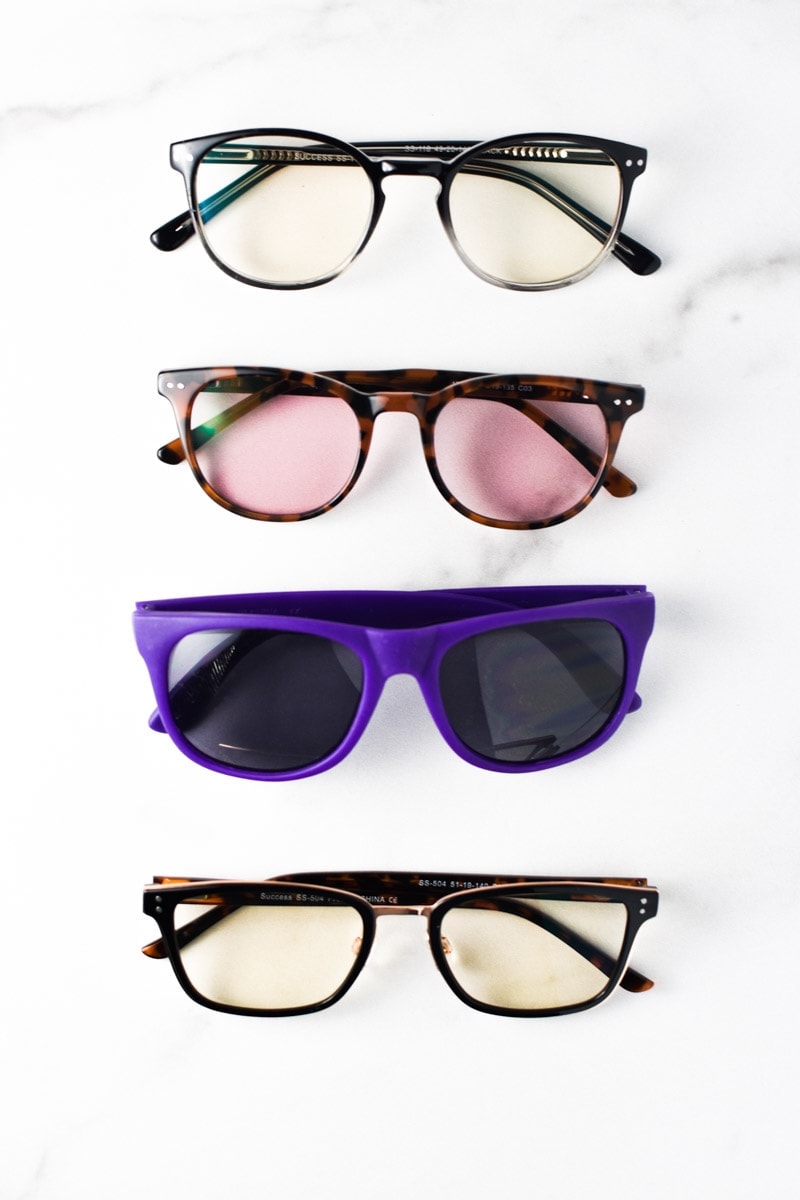
My Personal Experience with Migraine Glasses
Throughout the years, I’ve tried many different brands of glasses for migraine. Over 7 years ago, when I was officially diagnosed with Vestibular Migraine, all my work was done on a computer. For 8-10 hours a day, I’d squint at watch designs, tiny specs, and loads of excel worksheets under the florescent lights of my office. It was a complete nightmare! I used to come home and just want to keep my eyes closed the rest of the night for relief.
That’s when my neurologist recommended FL-41 lenses, which have the pink tint. The first pair I bought was the original Axon lenses, and although they did help, I think my trigger load was just too high to see a lot of benefits.
Once I left my job and started working on Dizzy Cook, I was able to control my environment more. I am still in front of screens for most of the day between writing posts, editing photos, and answering questions, but I’m able to take breaks more often or spend a day cooking if screens are just too much.
On the days I am on the computer, I can tell such a difference when I wear my migraine glasses. Not only do my eyes feel more rested and less strained, but it really does decrease any build up of dizziness. Sometimes if I go without them, I can feel my brain start to get frazzled and my eyes ache.
With vestibular migraine especially, stores like Target or the grocery store can trigger dizziness. I used to go with a hat, glasses, and ear plugs just to try to make it through. These types of glasses can be helpful for this experience as well, and I’ll go into detail on that within the breakdowns.
Full disclosure, I’ve worked with all brands in some capacity. I make a small affiliate commission from sales using my code with Axon, Avulux, and Migraine Shields. I am currently an Avulux Ambassador. None of them have paid for this particular post other than providing lenses for review - it is all my personal opinion.
Jump to:
Evidence Based Migraine Glasses
Something I've found that's tricky with other brands is they don't fully disclose what percentage of harmful light they block, they'll just say they block it. This can leave a lot of room for grey areas and not as much protection as some of us need.
The Avulux lens technology has been patented and has performed well in recent independent 3rd party studies. They are the most advanced lenses on the market based on new research. This lens allows in soothing green light, which has been shown to be helpful for migraine patients managing light sensitivity. I find these lenses also have the least amount of color distortion with the most protection.
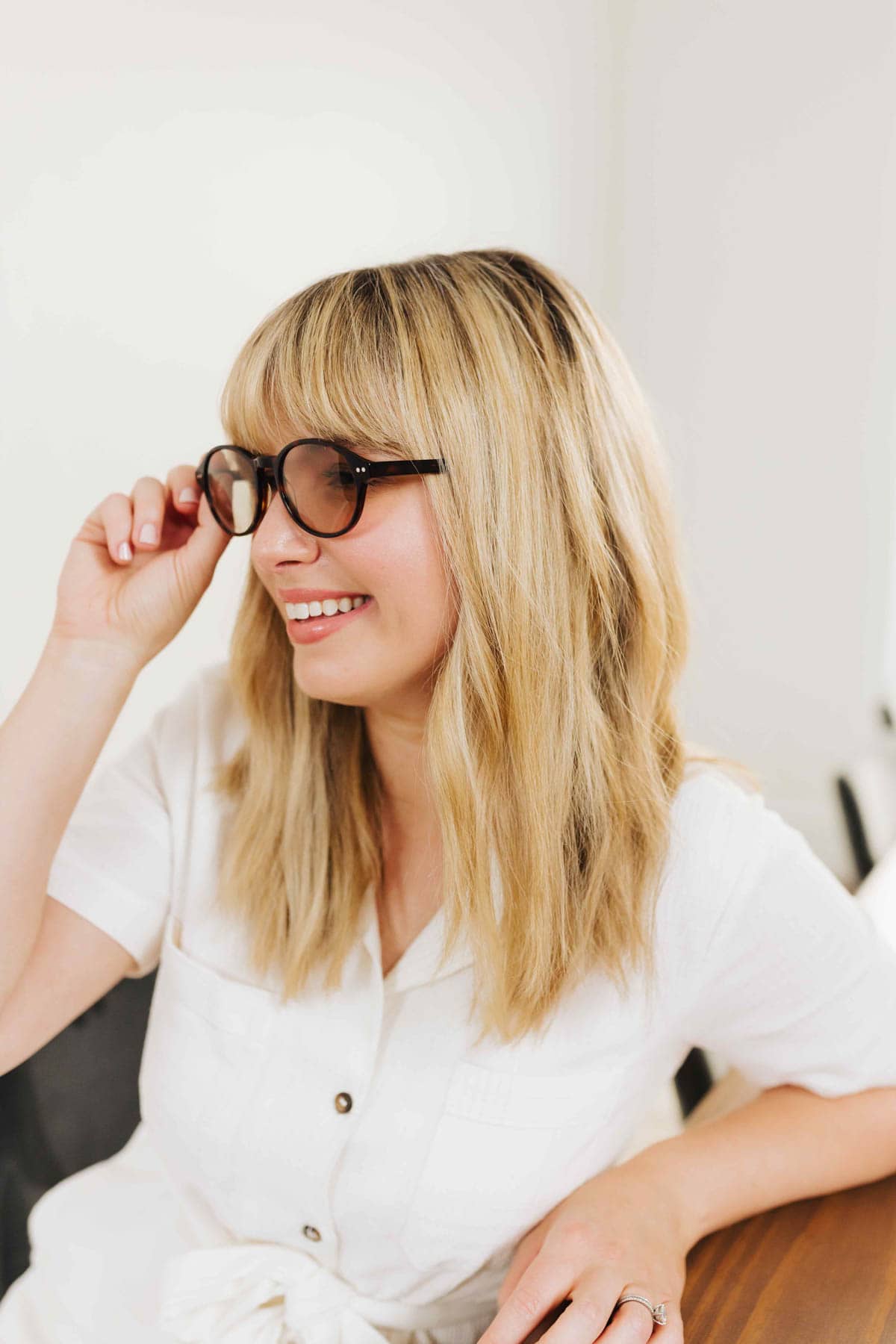
Avulux
Avulux blocks 97% of blue, amber, and red light, while letting 70% of green light through. This is also the science behind Allay Lamp, a green light therapy for migraine. Although I never found green light therapy to be successful at reducing dizziness (since I don't get head pain with my vestibular migraine attacks), it did help with lowering anxiety and promoting more restful sleep. I found the same to be true with wearing Avulux lenses.
They are the only company I've found to do independent studies specifically on their lens technology, which shows 74% of participants reduced their amount of medication needed to continue daily activities, and 38% prevented light-triggered pain. No other brand is this open with their results.
Avulux comes in a variety of frames and although their lenses look darker pink in pictures, they're not pink in person - more of a very light grey/yellow tint. While it is noticeable that you're wearing some kind of special lenses, it's not as obvious as the FL-41 pink tint. They ship non-prescription lenses internationally, but prescription lenses are only available in the USA. You can even place their lens technology in your own frames.
- The Pros - Avulux has the science behind it, they're lightweight and fashionable, and they are really effective in big box stores with fluorescent lights. I find they help decrease my light sensitivity and make crowded, bright stores more manageable. If you find yourself on screens later in the evening, these will definitely help you with more restful sleep and make scrolling on the phone less of a trigger. They offer prescription lenses and a 60 day trial period.
- The Cons - With the original lenses they sent a few years ago, I found there was an adjustment period of about a week. With new lenses I received recently, I didn't have this issue at all. Not sure if that's just consistent wear or if they've changed something! These are also the most expensive glasses, but you are paying for the quality, lens technology and independent studies that other brands don't have. Basic lenses are $299.99 USD to start.
If you're interested in trying Avulux, they offer $25 off with code THEDIZZYCOOK and also a 60 day easy return policy. My favorite frames are the Vox in Champagne.


Axon Optics
Axon used to use FL-41 tint to reduce light sensitivity and symptoms during a migraine attack, as seen in the picture above. But recently, they've changed to upgrade to the new Avulux lens technology, but using their existing frames! So the lenses are no longer pink tinted and will look like Avulux, but with different frames.
- The Pros - Axon has really great styles and now their lens technology has been upgraded to be the same that Avulux offers, which you can read more about below. They also offer a fit over style as well as a build your own style, where you can send in frames and get the lenses to match.
- The Cons - Axon used to cost $189, but are now priced the same as Avulux. This is because of the upgraded technology, but still, $300 can be hard to spend on lenses. My discount still applies, so you can use THEDIZZYCOOK for $25 off.
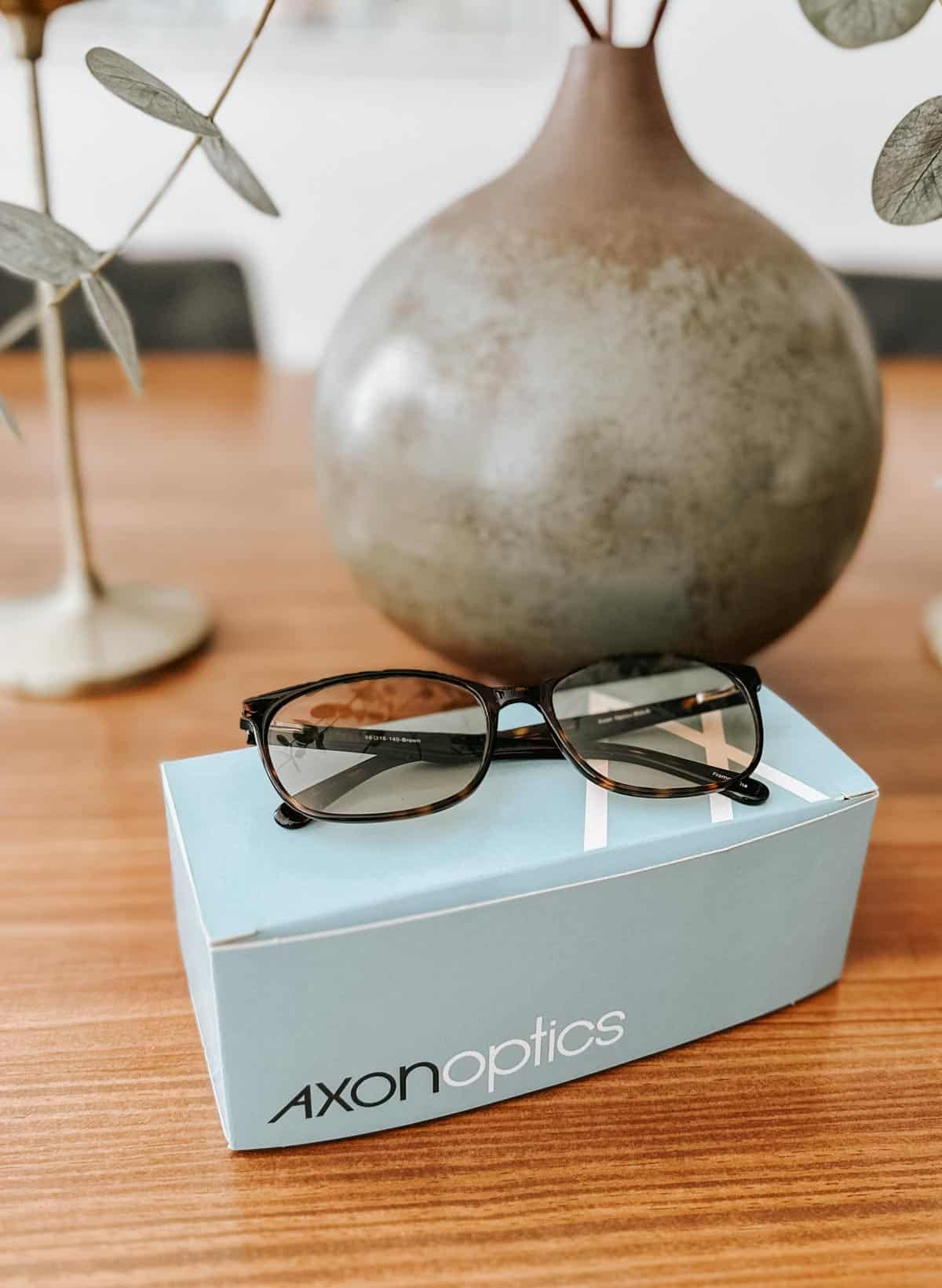
Blue Light Blocking Glasses
Blue light blocking glasses are not created equal. So often I see people order cheap ones from Amazon which don’t specify what range of blue light they block, or how much. You could be blocking blue light that’s not even in the harmful range, below 420nm, and it’s a complete waste of money. The highest range of energy with blue light is between 400-440nm, and this is usually what is associated with digital eye strain. Above that, between 440-500nm, is what effects the sleep/wake cycle. I actually see this range varied on different sites - some say it’s between 460-500nm.
Either way, anything above this range of 440-460nm can actually be considered “good” blue light because it controls the secretion of melatonin. This is essentially the type of light that makes you feel more awake, happy, and energized. In fact, light therapy that’s used to treat Seasonal Affective Disorder (or SAD) is used within this range.
So before you set out to buy glasses that block out the blue light in a higher range, like the FL-41 lenses, consider this in your purchase. Will these be used during working hours or do you prefer to use them before bed?
Migraine Shields
What makes Migraine Shields a little bit different is they are blue light glasses intended for migraine, but without the pink FL-41 tint. The tint is like a very faint yellow, which I don’t really notice once I put them on. I used to really enjoy these for computer work. Unfortunately Migraine Shields shut down their production.
They say you can still find the lens technology offered through BluTech at certain providers, but I have not heard of any patients being able to locate it since it shut down.

Felix Gray
With Migraine Shields no longer in business, I recommend Felix Gray for blue light blockers. Felix Gray is a collection of blue light blocking lenses that come in clear and amber tint. The clear lenses are stylish and just look like regular glasses, while the "sleep lenses" with amber tint have a slight tint to them.
The clear lenses are 15 times more effective at blocking blue light at 455nm. The amber tint is 23 times more effective, plus clinically proven to increase natural melatonin secretion by two times. The focus of these lenses is just to block blue light, and not necessarily tested on people with migraine disorders. You can get them with or without magnification, in a multitude of frames and they reduce glare as well.
I highly recommend these if you are doing a lot of computer work and need to have a little more clarity on color correction. For instance, I work a lot on photo editing and some of the tinted lenses like FL 41 and Avulux are just a tad dark for me to do this accurately.
These lenses run about $95 per pair making them an affordable option. They also are FSA/HSA eligible.
FL 41 Glasses
This actually goes back to several studies, but one interesting one is through Dr. Burstein, who you may have seen on the Migraine World Summit discussing Green Light Therapy and the Allay Lamp. His research team found that the color most comfortable for those with light sensitivity is between 480 and 590nm, which is a green hue.
In 2016 Dr. Bradley Katz set out to create a lens that blocked 480nm of light, which his research showed was most irritating for people with light sensitivity, but without being super dark or having a significant distortion. This is how Axon Optics came to be developed in 2011.
FL 41 tinted glasses have been studied for people with migraine more specifically than blue light blocking only lenses. While the findings are significant, the studies are also done in part by parties who are associated with the manufacturing of FL 41 lenses.

TheraSpecs
TheraSpecs also uses FL 41 tint for their lenses, but their original tint is a little more pink/reddish. They were developed by a Migraine community member who understands what it's like to live with this illness. They claim to block up to 25x more blue light (up to 80%) than other blue light blocking glasses at the higher level of 480nm.
TheraSpecs has the darkest tint of all 3 lenses and I believe this is why they're extremely popular with the chronic migraine community. At the Migraine World Summit event I attended, everyone was wearing the Audrey wrap glasses. These also come in Indoor and Outdoor lenses, which are polarized sunglasses.
In addition to the FL-41 tint, they also offer polarized outdoor lenses which are 100% UVA/UVB blocking and offer glare protection. Their glasses are in the lower range at $119-149 and they will occasionally offer discounts!
Recently TheraSpecs has launched a new line of different color tints to help with specific symptoms.
- The Pros - TheraSpecs original have a much darker reddish-pink tint, so if you're used to wearing sunglasses inside everywhere (which is not good as it makes you more sensitive to light over time), this is a great product to transition to. They also offer a “wrap” style which fits over prescription lenses. I’ve heard wonderful things about their polarized outdoor lenses, I’ve just never got to try them myself! They’re one of the more affordable brands, especially when they have a discount.
- The Cons - These are more dark and colorful, which makes it difficult for me to work on photo edits with good clarity. I feel like my screen is more distorted when wearing these and I wish they had more fashionable frame styles to choose from! The super pink tint used to make me self conscious because my old coworkers used to joke I looked like Elton John.
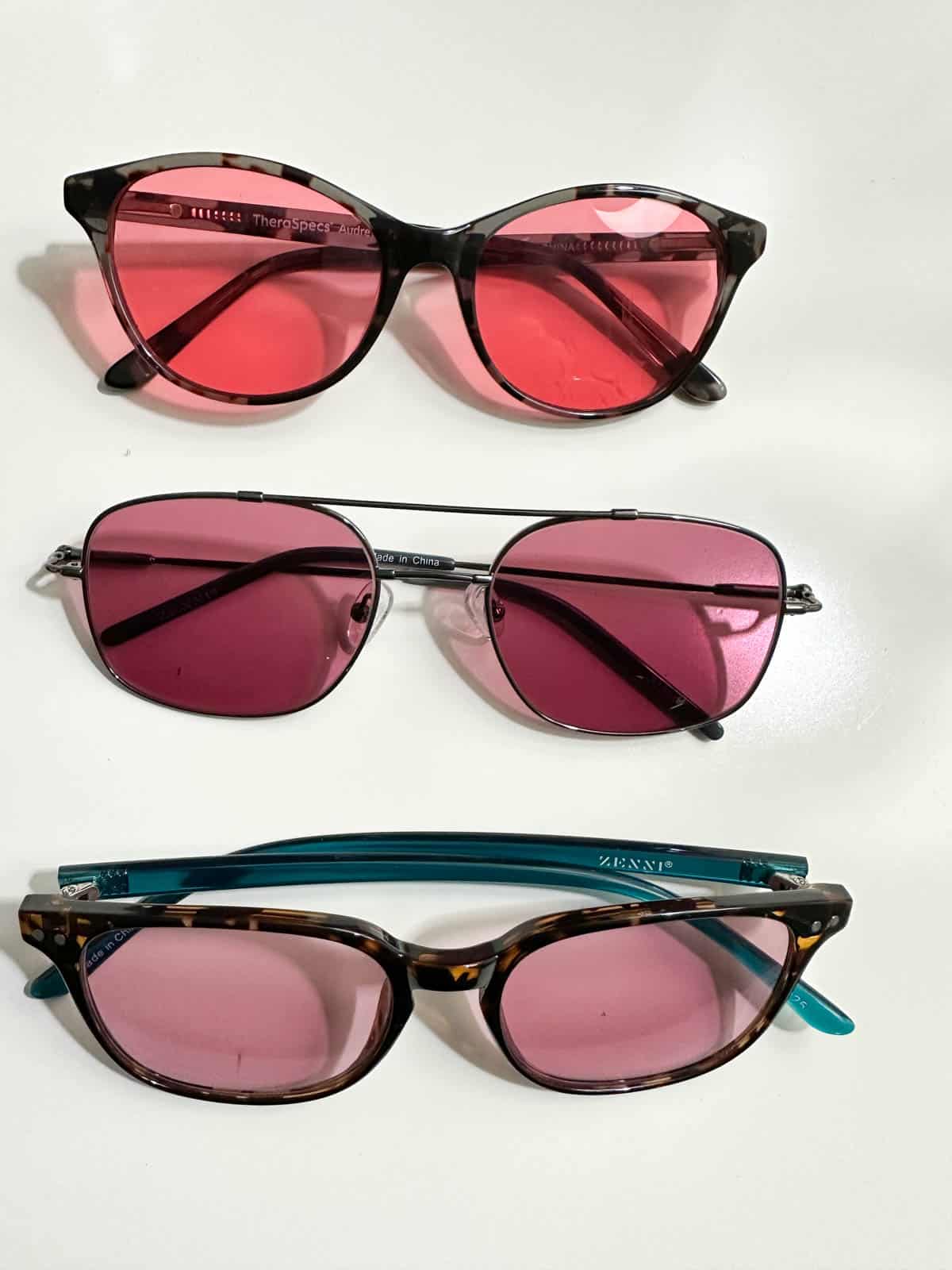
Zenni
Zenni is a large company that makes affordable eyewear in blue light blocking glasses as well as an FL-41 tint. The tint you can get in a 25%, 50%, and 80% range, which goes from lighter to darker pint. These filter out the 480-520nm wavelengths, although I cannot find out specific percentages of what is actually blocked - they just say it blocks out "most". I find Zenni to have more of a berry tint than the red like Theraspecs.
The added on FL-41 tint is $45.95 USD. So the glasses as a whole end up being about $75+ total.
- Pros - This is the most affordable FL-41 lens option. You can also get them in prescription lenses.
- Cons - You definitely notice a price difference compared to other brands. The frames feel less sturdy and some are heavier on the face.
So Which Migraine Glasses are Best?
All four brands are really solid companies and I have owned and used all of them in my five years of dealing with chronic and episodic vestibular migraine. The truth is, they’re all very different and good for specific activities.
At this point in my migraine journey, it’s also a little difficult for me to compare them. I’m more episodic now and really only deal with eye/head pressure and dizziness when I’m on the computer too long, whereas before I was trying to solve a mountain of issues like vertigo, derealization, etc. with FL-41 lenses.
- I really enjoyed Migraine Shields, so it's a shame they went away. However, for relief from eye strain specifically caused by the computer, I'd recommend Felix Gray. I spend so much time squinting while editing photos and writing posts that I really enjoy a lighter tint or no tint to avoid color skewing. If you have attacks every few months, these will probably work well.
- Avulux and Axon are my personal favorites right now. They're cute and I feel confident wearing them in public. I definitely have less eye strain and sleep better using them to look at screens in the evenings, and they work well for stores. This is a solid brand if you need prescription lenses and can spend a little more money. If you have chronic or high-episodic symptoms but are still working, I'd say this is the best option.
- For TheraSpecs are best for those with really severe attacks as an alternative to wearing sunglasses, or for super bright big box stores. Readers really enjoy the wrap around lenses.
In conclusion, finding the best migraine glasses involves testing them yourself. All these companies offer fantastic return policies, so order a few and then return the ones that aren't a fit for you.
I hope they don’t hate me for saying that, but it’s truly the only way to know what will work best! What suits me best, may not suit you. I do hope I offered a little more insight into the differences between all four lenses.
Sunglasses and Light Sensitivity
The most important thing to note, and why I added my sunglasses photo, is wearing sunglasses all the time indoors can actually increase your light sensitivity by causing dark adaptation. This means your eyes get used to the darker environment and increasingly become more sensitive. Therefore you may be making your symptoms worse in the long run for short term relief.
Sunglasses, especially polarized, can be extremely helpful for outdoor wear. This just applies to wearing them indoors during attacks. Investing in one of these migraine glasses may have good long term effects on decreasing your light sensitivity overall.
Natural Migraine Treatments
For more information on these lenses for migraine, check out the following posts.
This post was originally written January 4, 2021 and was updated December 15, 2023 with new information.

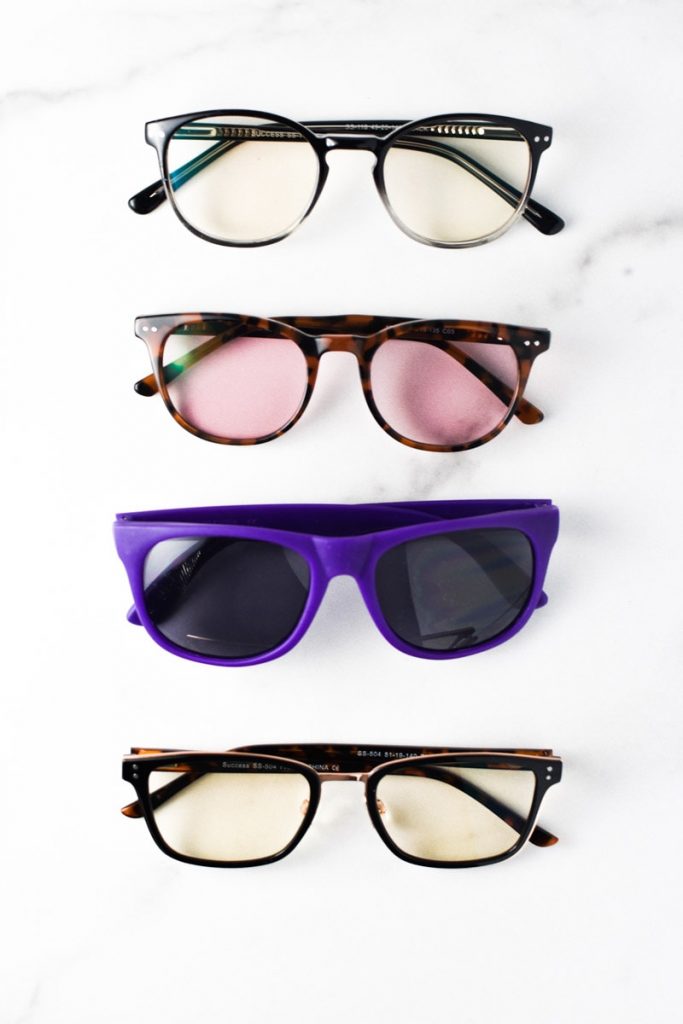
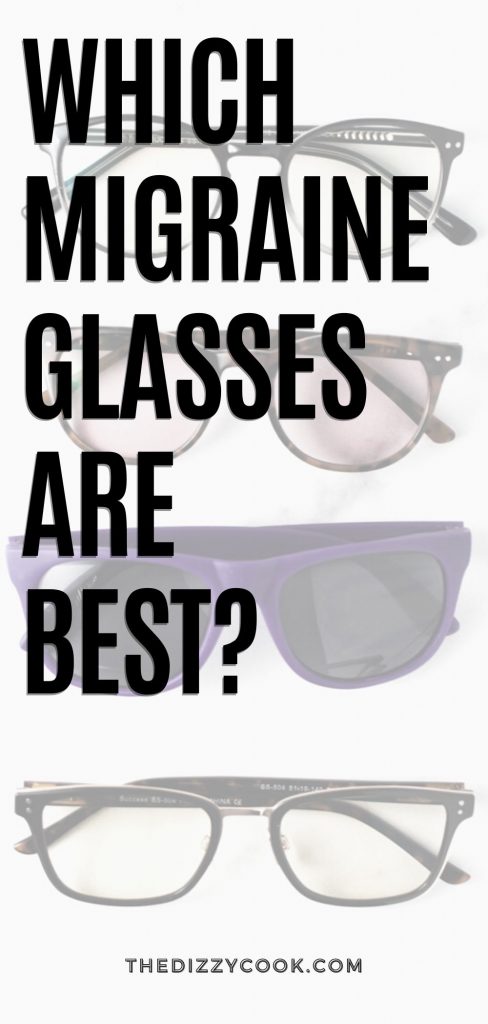
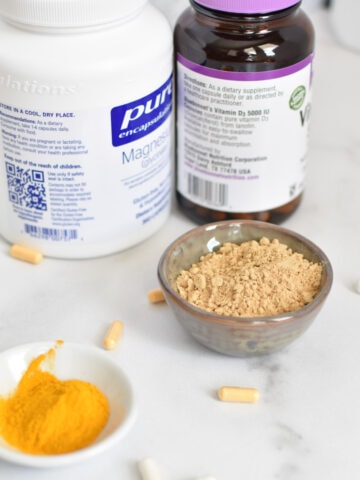
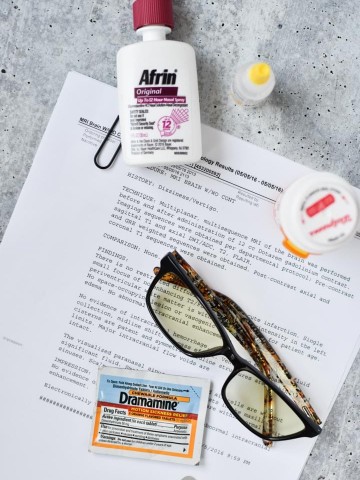

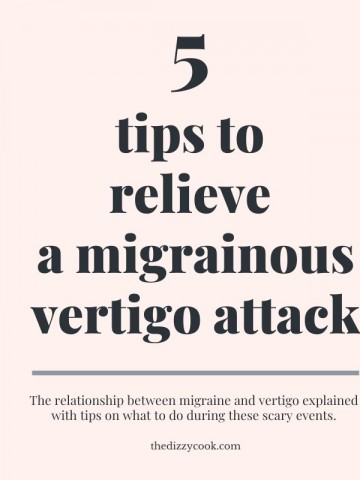

what glasses do you recommend for a light sensitive person where color is intense from lighting? Particularly for driving at night making red brake lights on cars, traffic lights, headlights, and phone usage more bearable?
I currently have computer glasses that are fit over because I need readers while on the computer and reading. But in everyday life I do not wear glasses. I suffer from the lights in stores, all the visual triggers for VM but since I don't need glasses I would get the regular lens. First wonder if they make you dizzy or hard to use because my computer glasses definitely can't see well out of them without my readers and secondly, I get a bit confused because in vestibular therapy and on the VeDa site they say to continually expose yourself to these triggers so your eyes will eventually adapt but if I wear the glasses won't this impede that process? The computer glasses I will always have to wear no matter what. Thank you for any guidance you can provide. I have had this for 4 years and tried so many things, so many doctors and still I can't get a handle on those triggers.
Hey Nancy,
It may be worth investing in a pair that you just wear out in stores without the prescription.
So the advice for exposure is more for people who wear very dark sunglasses as this can increase eye sensitivity. For some of these lenses, they do allow in certain bands of light so you're still getting some exposure. Wearing them in places that give you more issues like the grocery store or out to dinner shouldn't be often enough to increase sensitivity - it should really only help! And then hopefully with time and other treatments, you won't need them as often. Like for me, I can go grocery shopping sometimes without my Avulux, but some days that I'm feeling worse I need to wear them. Or I start to feel it on my computer if I forget them. It's just another tool to help. It doesn't really make sense to wear them constantly if you're just going about your day in your house unless there are certain lights/screens that bother you. I hope that helps.
I recently learned that Avulux makes prescription lenses only in polycarbonate. They can't do high index. Unfortunately, polycarbonate has more distortion and makes me seasick. I requested blank plano lenses like Axon used to offer so I could have magnetic clip ons made to fit my prescription glasses. Avulux refused and said I should buy their clip ons....which won't fit my Rx glasses.
Do you know which brands can make a high index Rx lens? Or will sell me plano lenses to have my own clip on made?
Hi I'm looking into the Avulux glasses. My opticans do an anti glare which blocks out the artificial light. Do you think they would be helpful?
Sorry, do you mean they do an anti-glare on the avulux lenses? I don't find them to have a ton of glare, but I guess that would be helpful!
Have you seen the new Zenni Optical Fl-41 lenses? I am interested in how they compare as well.
Just got them in the mail to try out!
I would love to know what you think! I've been tempted to buy them, but they seem too good to be true!
So the positives are that I like you can buy different tints some darker and some lighter. The frames are overall pretty light. To me, I prefer frames without the FL-41 tint now. I just got used to the minimal color alteration and I do think the green light filter helps too.
I have a pair of FL-41 that was not made by Axon, but do have a wrap-around pair of sunglasses to wear over my regular glasses from Axon. I need/want a new pr of frames & need advise about which lense to get for chronic, almost daily migraines. I have picked out a frame locally. Can any of these companies put migraine lenses in them? Axon, Axulux, Theraspecs???? Which should I choose? Annette
Yes! My best advice to just to order the regular ones first, then see which lens you prefer. You can return them and then decide which ones to get a prescription for. They're expensive so you need to make sure you'll love them. I also run sales occasionally if you join my email list.